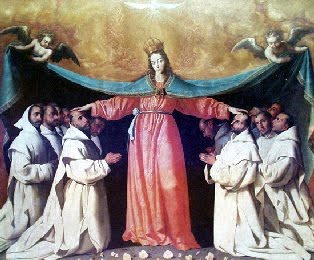It’s not often I find inspiration in 1960’s pop songs but ‘There’s a Kind of Hush’ comes to mind after I chanted (recto tono) Matins and Lauds for Holy Thursday from the 1962 Roman Breviary. There is an almost eerie, but at the same time beautiful, interior silence that accompanies one after the conclusion of these Offices. Eerie perhaps because the Light of the Lord appears to have been dimmed; beautiful because one can’t help but sit silently with our Blessed Lady in anticipation when on Easter there will be no doubt that Jesus is indeed the Light of the world, when the Conqueror of death will rise.
Matins and Lauds for Holy Thursday and indeed for the entire Sacred Triduum are quite often referred to as ‘Tenebræ’, a Latin word meaning ‘darkness’. There is a sense of spiritual darkness with these Offices – no hymns, no Te Deum, no Gloria Patri. There are three Nocturns, with Lessons for the First Nocturn being from the Lamentations of Jeremiah. The Tenebræ has at times been described as a funeral service, because of the atmosphere of gloom that envelops these Offices.
While I was alone this morning with my breviary, if you have the opportunity to experience the Tenebræ service in your diocese, don’t miss the chance – or chants. Here is a video with different parts of the Tenebræ.
Matins and Lauds for Holy Thursday and indeed for the entire Sacred Triduum are quite often referred to as ‘Tenebræ’, a Latin word meaning ‘darkness’. There is a sense of spiritual darkness with these Offices – no hymns, no Te Deum, no Gloria Patri. There are three Nocturns, with Lessons for the First Nocturn being from the Lamentations of Jeremiah. The Tenebræ has at times been described as a funeral service, because of the atmosphere of gloom that envelops these Offices.
While I was alone this morning with my breviary, if you have the opportunity to experience the Tenebræ service in your diocese, don’t miss the chance – or chants. Here is a video with different parts of the Tenebræ.











